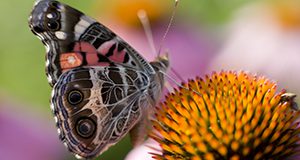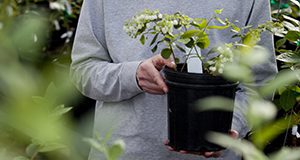The purpose of this report is to summarize ornamental plant producers' perceptions about neonicotinoid labeling and anticipated changes in production practices due to neonicotinoids labeling policy intervention. The target audience is industry, state agency, and public stakeholders involved in decisions and policy making related to the use of neonicotinoid insecticides in the U.S. ornamental plants industry.
https://edis.ifas.ufl.edu/fe1094
Tag: Xuan Wei
Are consumers knowledgeable about neonicotinoid insecticides and pollinator-friendly plants?
What does the general public know about neonicotinoids used in ornamental horticulture and their effects on pollinators? The question is an important one given that home landscapes serve as pollinator habitat and can impact pollinator health. This 5-page fact sheet written by Hayk Khachatryan, Xuan Wei, and Alicia Rihn and published by the UF/IFAS Food and Resource Economics Department summarizes a survey addressing consumer knowledge about neonicotinoids and pollinator plants, as well as their interest in enhancing pollinator health. The survey is part of a larger research project aimed at incorporating pollinator conservation into the ornamental horticulture industry's sustainability initiatives.
https://edis.ifas.ufl.edu/fe1081
Consumer and Producer Perceptions and Preferences for Pollinator Friendly Labeling Practices in the US Green Industry
Increasing consumer interest in sustainable products and in protecting bees and other pollinator insects may be reducing demand for plants grown using neonicotinoids. This 5-page fact sheet written by Hayk Khachatryan, Xuan Wei, and Alicia Rihn and published by the UF/IFAS Food and Resource Economics Department summarizes consumer and producer perceptions about neonicotinoid-related regulations and labeling practices and identifies discrepancies between consumer and producer preferences for different pollinator friendly labeling phrases.
https://edis.ifas.ufl.edu/fe1083
Does Eco-label Format Influence Consumers’ Valuation of Fruit-Producing Plants?
Consumer demand for environmentally friendly products has increased, and consumers are willing to pay more for environmentally friendly fruit-producing plants. With the increased demand, however, the number and variety of eco-labels describing the environmentally friendly qualities of plants has also increased, which could confuse consumers and decrease label effectiveness. Previous studies found that well-designed eco-labels improve consumer understanding, clarity, and choice. This 6-page fact sheet written by Hayk Khachatryan, Alicia Rihn, and Xuan Wei and published by the UF/IFAS Food and Resource Economics Department summarizes a study that addressed how different eco-label formats (text vs. logo) impact consumer visual attention, preferences, and valuations of fruit-producing plants.
https://edis.ifas.ufl.edu/fe1074


